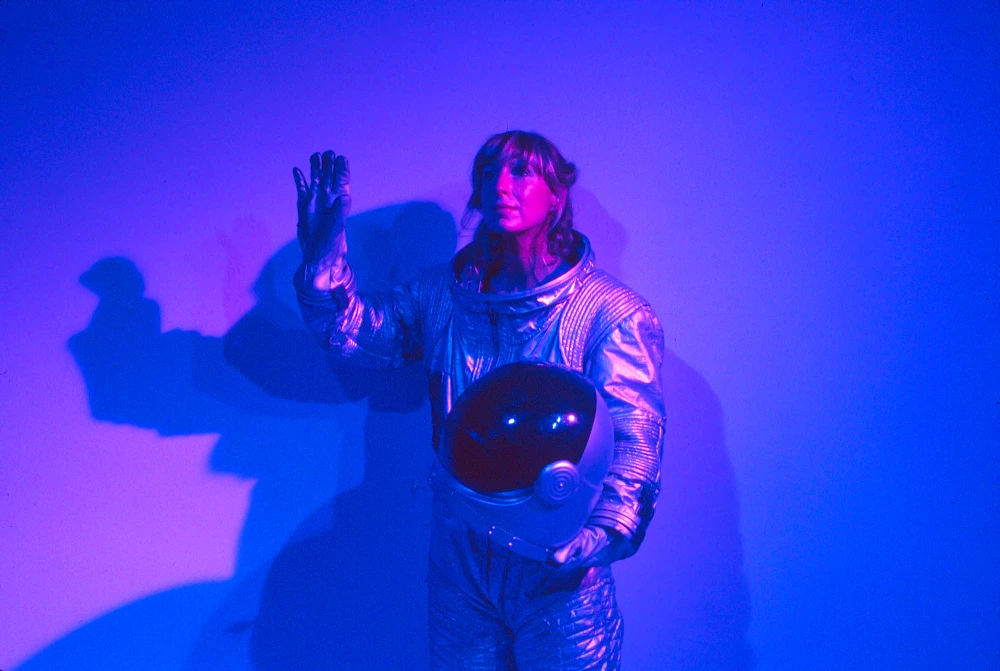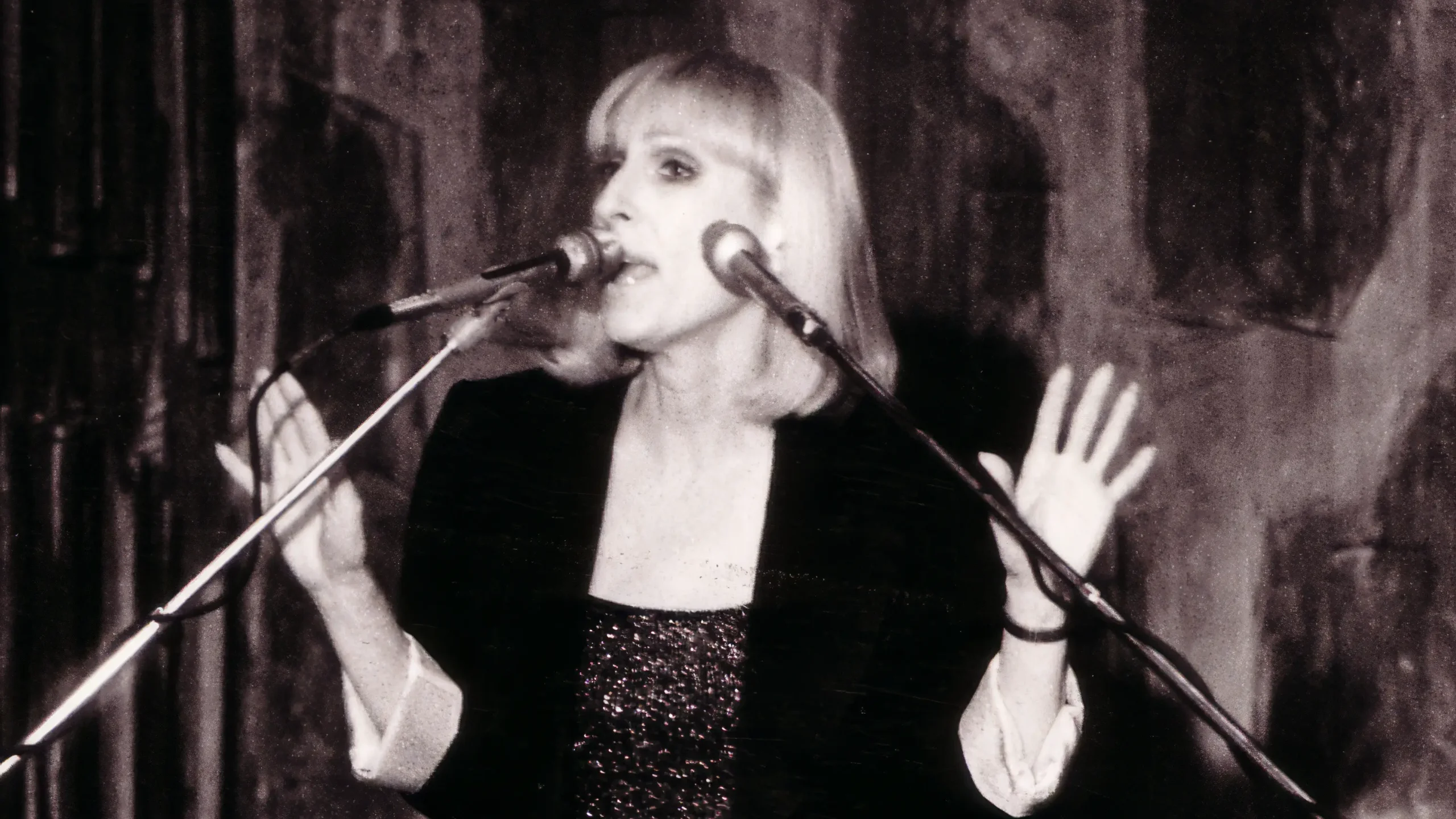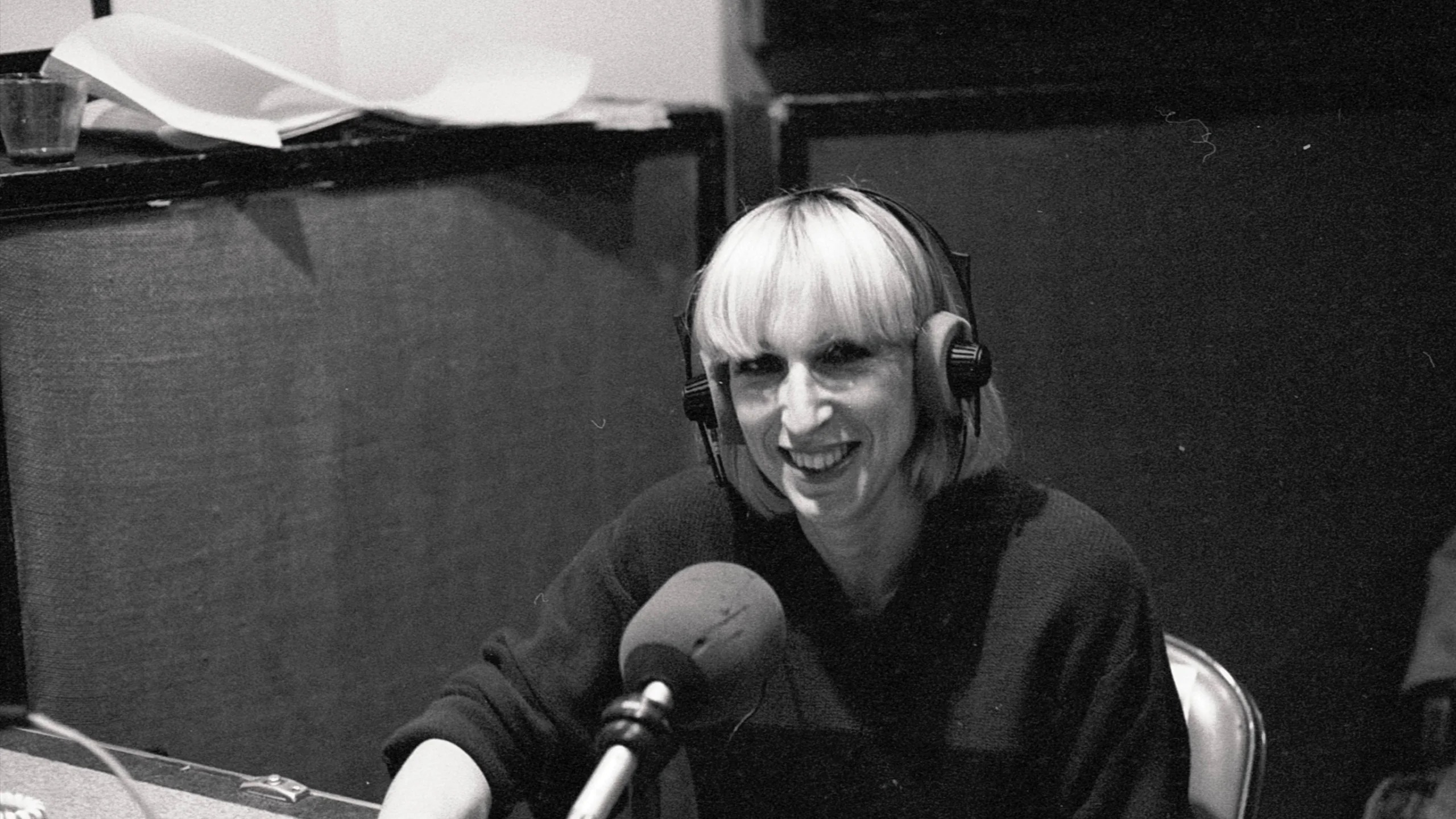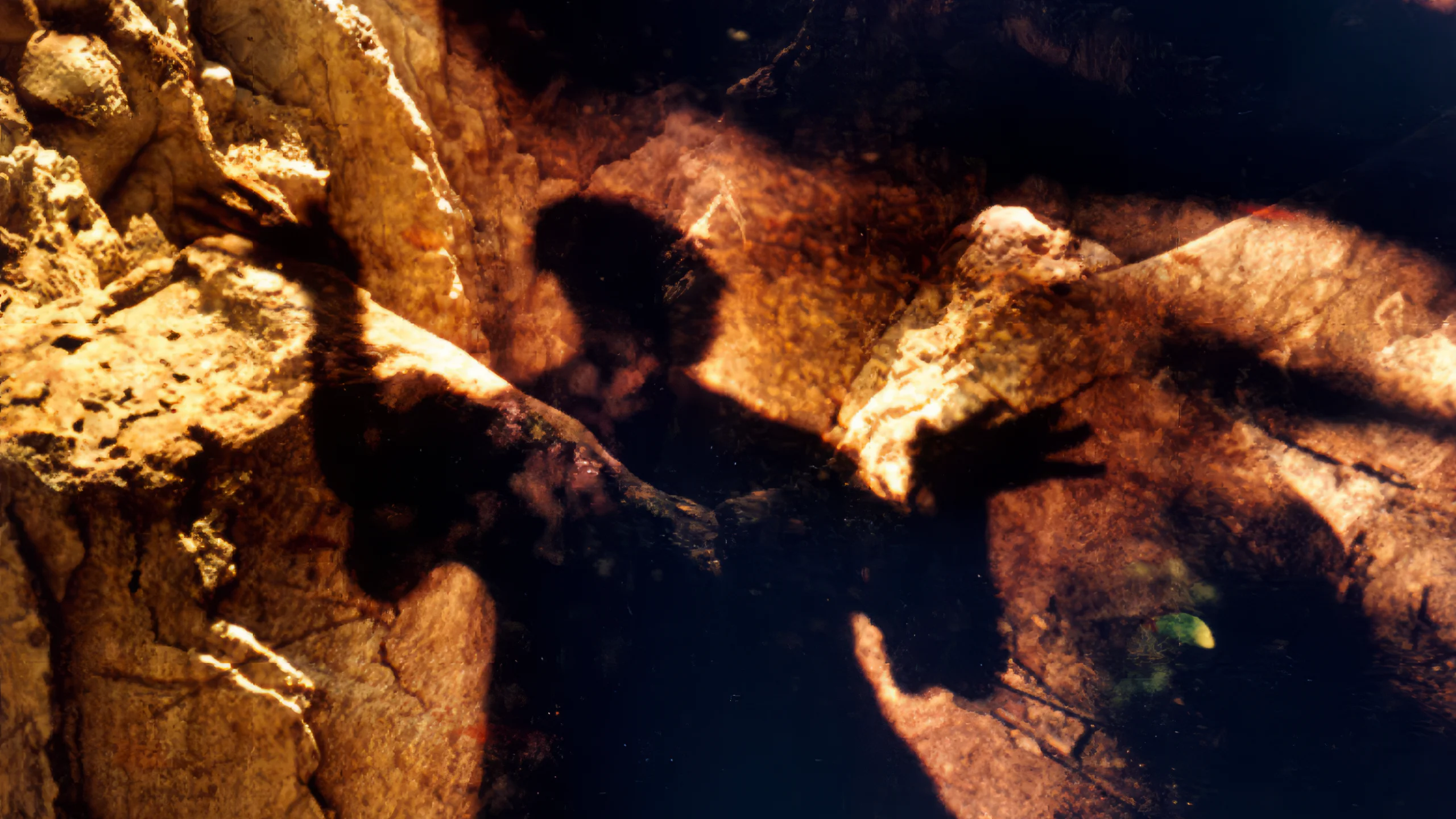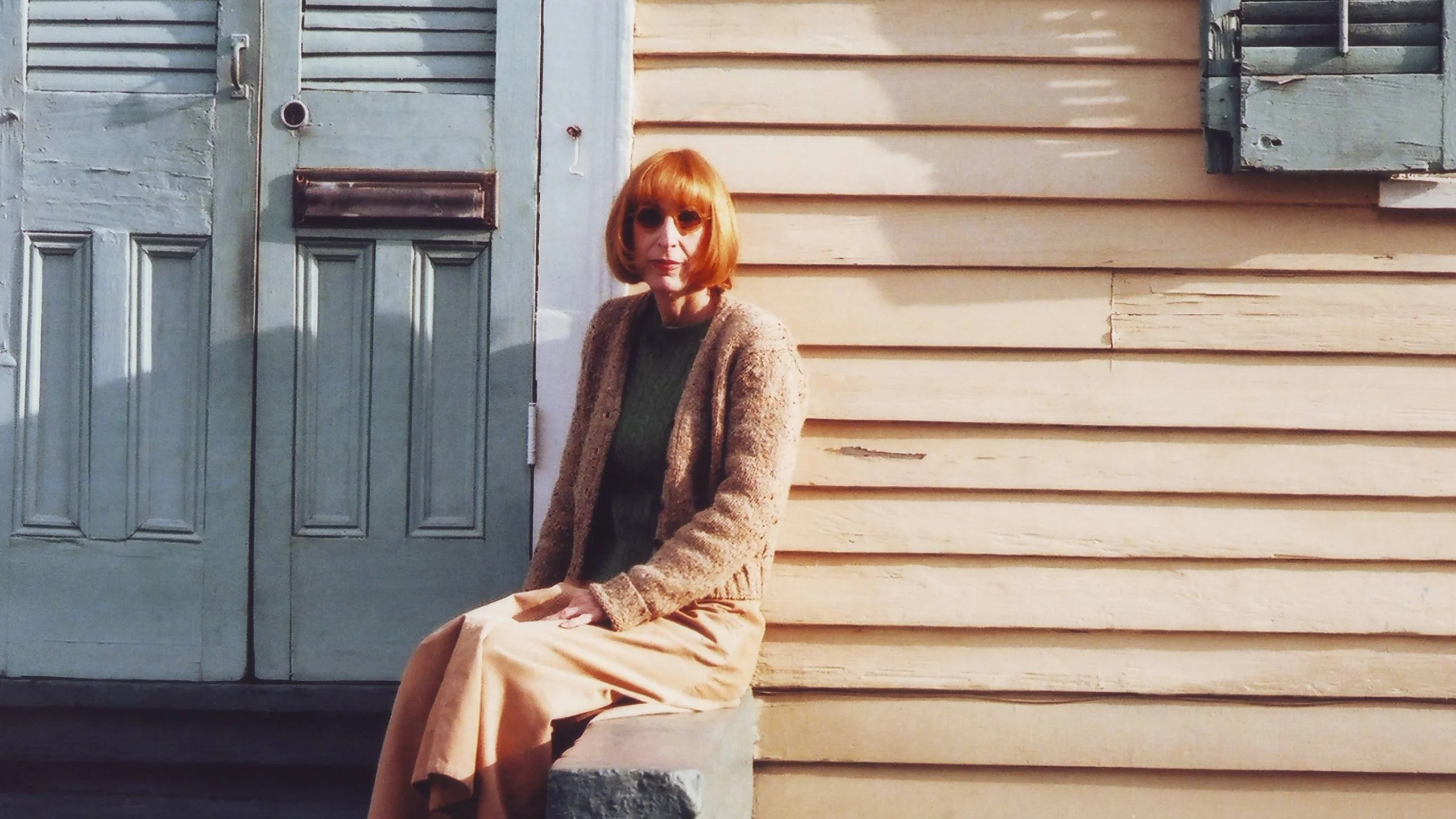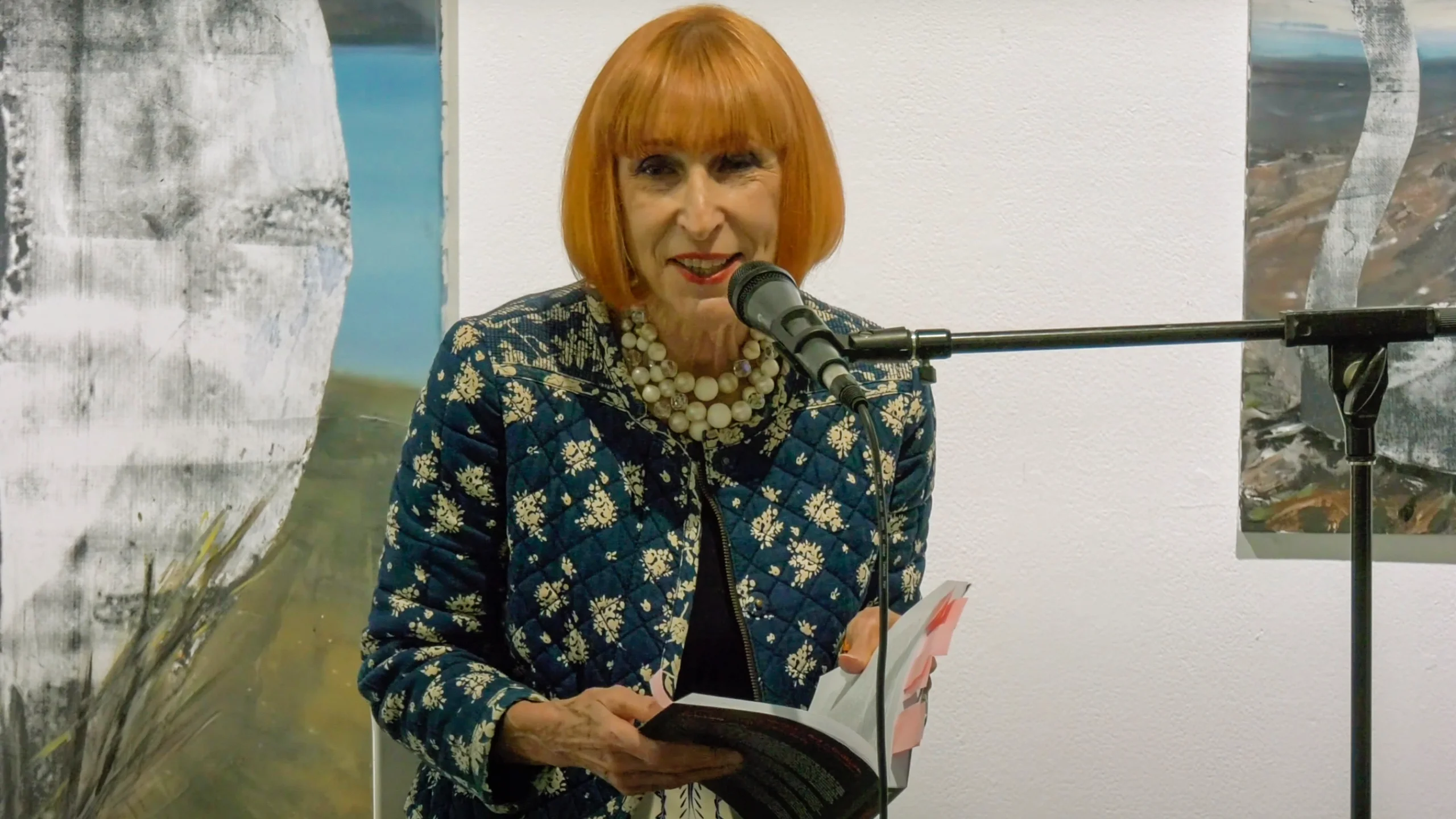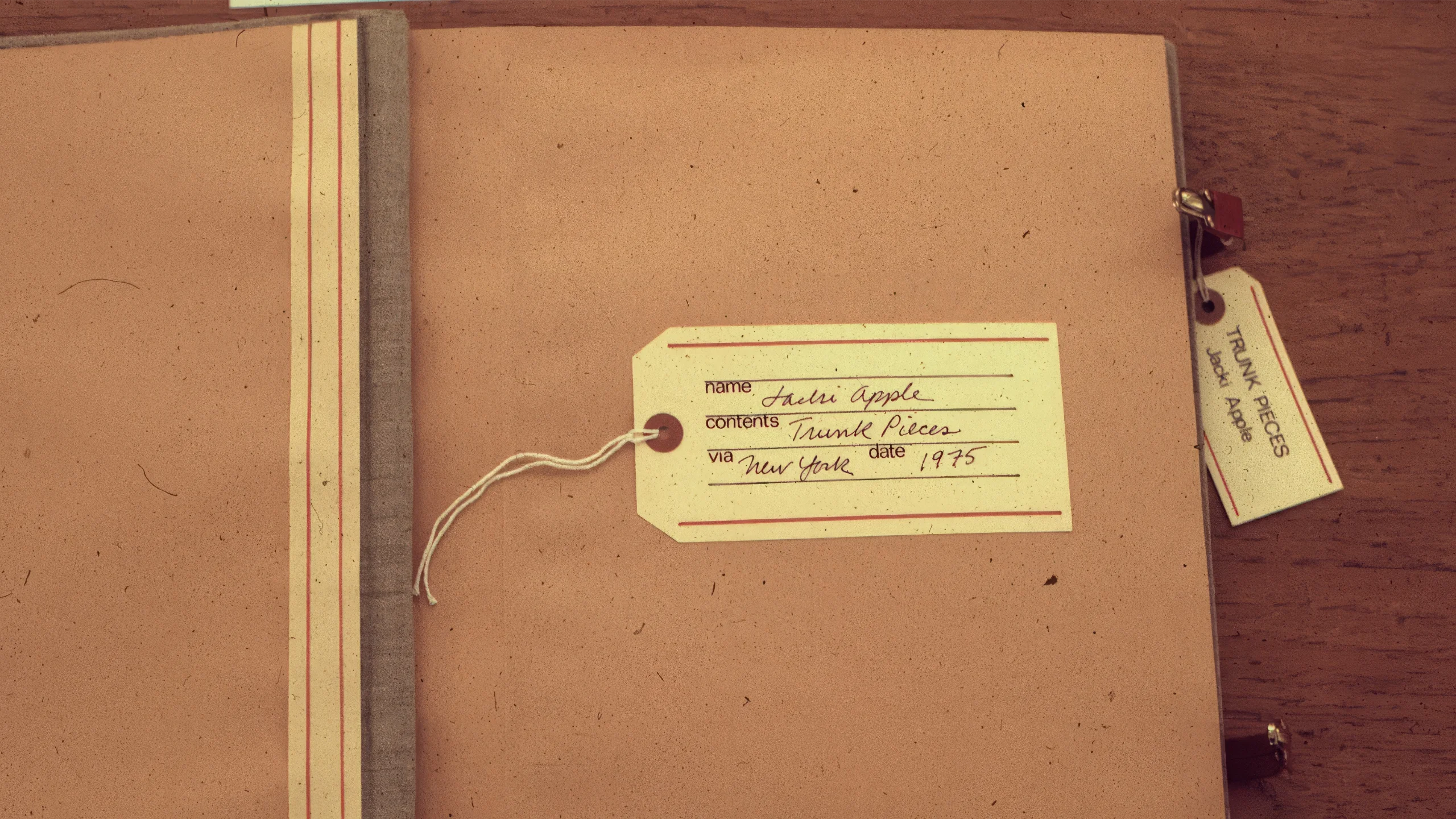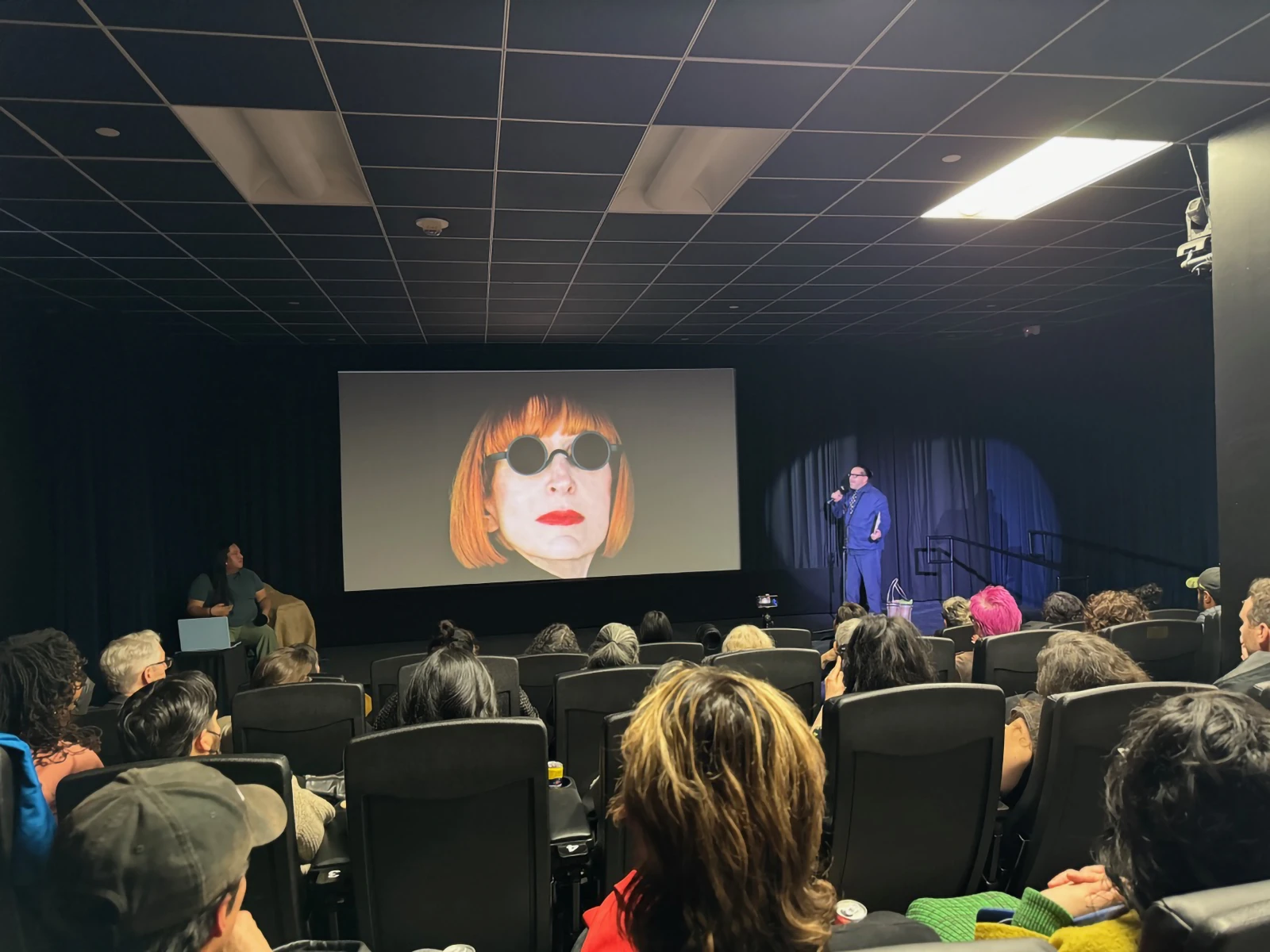Table of Contents
Table of Contents
Introduction
Jacki Apple had no “Manifesto” as such. However, the ‘Acknowledgments’ and ‘Afterword’ sections of her final major achievement, “Performance/ Media/ Art/ Culture Selected Essays 1983-2018”, speak to her qualities, her values and her character with uncompromising clarity. In her unstinting praise of others you know immediately who you are dealing with: what she so admired in others are the standards she set for herself.
“Afterword: A Retrospective View” is reproduced in full. It is her summation of life’s lessons learned. Magisterial in scope, intellectual by nature and yet devoid of pretension, her Afterword declares that “The purpose of art in all its forms is to tell us something about who we are, question our perceptions, and offer alternatives.” She made “art” her life’s work.
An important part of Apple’s artistic output has been labelled “eco-feminist”. True, but labels can set limits that do not reflect how wide-ranging her thinking actually was. For instance, in her 2016 catalog “Yoshio Ikezaki: Elements” Jacki Apple succinctly explores the differences between Japanese and Western perceptions of humans and their environment and the alternative, existential lessons Japan offers us in the West. Eco-feminism was a springboard for wider concerns, a platform for her determined call to action, her wake-up call to a complacent world still sitting on the fence as the planet burned.
Acknowledgements
Marina La Palma said ‘Yes!’ without a moment’s hesitation I would like to express my deepest gratitude and appreciation… for her extraordinary knowledge and intellect, her keen insights and historical overview, her passion for the subject matter, her skillful guidance, her generosity and her wit. The care and thoughtfulness she has given to the process of editing this book has been invaluable. Not only has she been a dedicated collaborator and brilliant editor throughout, but a joy and an inspiration to work with.
I dedicate this book… [to] Rachel Rosenthal whose life and work and values — her commitment to excellence, and her willingness to take on the truly big issues — have been my inspiration from the very beginning of our friendship when I moved to Los Angeles from New York City in 198l. She was a brilliant artist, writer, performer and teacher who did not shy away from controversy, and spoke from her heart and mind. She was powerful and she was also funny. She was my soul mother. Her courage, integrity, intelligence, passion, wit, and honesty are all in the image that graces the cover of this book. It speaks for me and for my writing over the four decades represented in this collection…
Thank you to Linda Burnham for founding High Performance magazine as a forum for performance art and cultural politics and carrying on its editorial mission with courage and integrity. Much appreciation to my editor Steve Durland for providing me with the opportunity to write critical issue-based features, many of which are the heart and soul of this book. Thank you for your maverick spirit and wry sense of humor, for your encouragement and support, for urging me to take on controversial subject matter and write in my own voice, and in so doing making me a stronger writer.
Much appreciation… to the late Joan Hugo, the southern California editor for Artweek, and a dear friend… She was a discerning and knowledgeable critic with an impressive command of language. A master of repartee with a pithy wit and playful sense of humor, she also functioned as the grammar police, keeping us on our toes. I learned how to say a lot in a short space from her…
Thank you to Chris Davies, the publisher of Fabrik magazine and website for having given me the uncensored free space to write in my own way about what I want to write about in this past decade…
My deepest appreciation to all the artists, performers, writers and composers who have envisioned and created these works…
Afterword: A Retrospective View
It is a profound learning experience to go back thirty-six years and re-read one’s own critical writings several times over from the perspective of where we are in the present. I was surprised, moved, sometimes even astonished by how prophetic much of the writing from the 1980s and early 1990s was, and how prescient and contemporary it remains today in 2018. It gave the process of creating this book with my editor Marina La Palma, a new sense of historical urgency, not only because of the relevance of the content and the issues addressed, but also because most of the independent art publications I wrote for during that pre-internet period no longer exist. Sadly, neither do their editorial missions. Thus without this book much of that material could easily disappear into oblivion, or remain hidden away in the library collections that will contain my archives, available primarily to future scholars. Likewise, much of the more recent material written for my online column could easily vanish when Fabrik magazine ceases and its website disappears into the ether.
In the process of reading and re-reading several hundred published essays, commentaries, feature articles, reviews and interviews written between 1982 and 2018, from which the fifty-seven essays in this book were finally selected, several things stood out. One was the sharp contrast between the openness and liveliness of the writing and publishing environment of the 1980s to mid-1990s, and the more limited and restrictive circumstances of this early twenty-first century period. The other was not only the current state of the arts and criticism in general, but what has happened to language, speech, and the conditions of cultural and political discourse.
Artweek, Media Arts, Visions, High Performance and others all long gone, provided an opportunity to write about controversial work and issues, develop a strong personal voice, and a critical position. The criteria for excellence still had credibility. Thus a negative “review” around a critical issue was perfectly acceptable, and when thoughtfully written even considered illuminating. As was irony, satire, expressive and “colorful” language, and an occasional “manifesto.” In regard to cultural politics linguistic restrictions did not apply. We were equally free to critique galleries and museums without any debt to advertisers, collectors, or those who wielded wealth and power in the arts. What was required was writing that was well-informed, insightful and smart, not just blandly descriptive, neutral or promotional. In looking back I doubt that many of the major features I wrote for High Performance would be published in today’s more repressive atmosphere.
And so we come face to face with the paradox of the present. A number of these essays presented a cogent warning about where the battles over speech and its censorship would lead. Especially the right-wing agenda to silence artists and take away their access to broadcast media, radio in particular, using accusations of “obscenity” as a strategy. The culture wars of the early 1990s may have been forgotten, but they are more present than ever with a truly Orwellian twist.
Today the matters of free speech, and its responsibilities, 1st Amendment rights, and censorship in all its insidious forms have become ten-fold more complicated in the age of the Internet and social media, and a political environment where facts are suspect, truth is relative, news is declared “fake” and journalists the “enemy”. It is also rife with ironies. On the political right the degradation and debasement of language has triumphed. All forms of vulgarity, viciousness, defilement, racism and fear mongering are not simply tolerated, but applauded and indulged in. Any and every angry, ignorant, crazy, or just plain hateful person can shamelessly mouth-off on social media, including the President. Meanwhile in the equally Orwellian universe on the left, the gatekeepers of so-called “correct” speech who dare not engage in reasoned intellectual debate lest they “offend” someone, have established a reign of censorship in academia that threatens the exchange of ideas crucial to critical thinking and a liberal education. Thus abetting the opposition that mocks them.
It is a strange place to be in as an artist, writer and educator with the hindsight of history. A little like standing on an ice floe broken off from a glacier, watching it slowly melt. “The sun” did not “come up over a new century” as I had optimistically anticipated thirty years ago, nor did we “wake up.” Instead the World Trade Center towers fell, and the mob boss of Trump Tower rose to power in an America split in half. How could we possibly have imagined that is where we would be in 2018? And yet that is where we are.
My personal mission as a writer and educator has been to situate art within a larger cultural and political context both inside and outside the confines of the art world. Over the decades I frequently wrote about the ways in which performance and media arts in particular were being co-opted by the marketplace values of the entertainment industry, and how that was contributing to the dumbing down of culture as a whole. It turned out to be a wry forecast of today’s vacuous world of instant celebrity and high tech kitsch.
Thus in the past two years more and more of the work that I am inspired to write about comes from artists from Europe, Asia, Africa and Latin America, as well as Americans of various backgrounds with historical perspectives, all of whom are grappling with and questioning their histories in light of present complexities. In confronting the problems of speech and language they also reveal its deceptions, the schisms between perceived realities, what is “true” and what is not.
Now more than ever we need to pay attention to the unfolding of history and where it is leading us. We need to reclaim corrupted language in order to write a better future. We cannot afford to ignore the dystopian version, nor can we accept it as a fait accompli. The purpose of art in all its forms is to tell us something about who we are, question our perceptions and offer alternative views. Because this book traverses thirty-five years of performance, media, art and culture it is my hope that you the reader will come away from it with some deeper insights into where we have come from and how we got here, regardless of whether or not you agree with all of my arguments. Instead let it be the opening for serious discussion. Hopefully a deeper understanding of the work of these artists past and present, the issues they dealt with and the contexts in which they created and presented their work, will inspire the next generation to rigorously critique the present, and imagine other possibilities than what the present portends.
Humans and Their Environment
In Japanese culture and thought for more than a thousand years there is no intrinsic difference or separation between humans and their environment. Rather they seek to blend in with the natural world that surrounds them, believing that this can provide them with a better understanding of themselves and others. Without this sensitivity to the subtle moods of nature it would be impossible to enter into the “emotional quality of things”, which is the foundation of of aesthetic awareness. This is expressed in poetry and painting as a deeply felt response to the beauty of changing seasons. In sharp contrast is the Western world’s ideal of conquering nature, of pitting ourselves against its forces and subduing them for our own use and benefit. Ironically the success of this enterprise is now endangering our world, both the natural and artificial one, as well as our survival as a species.
